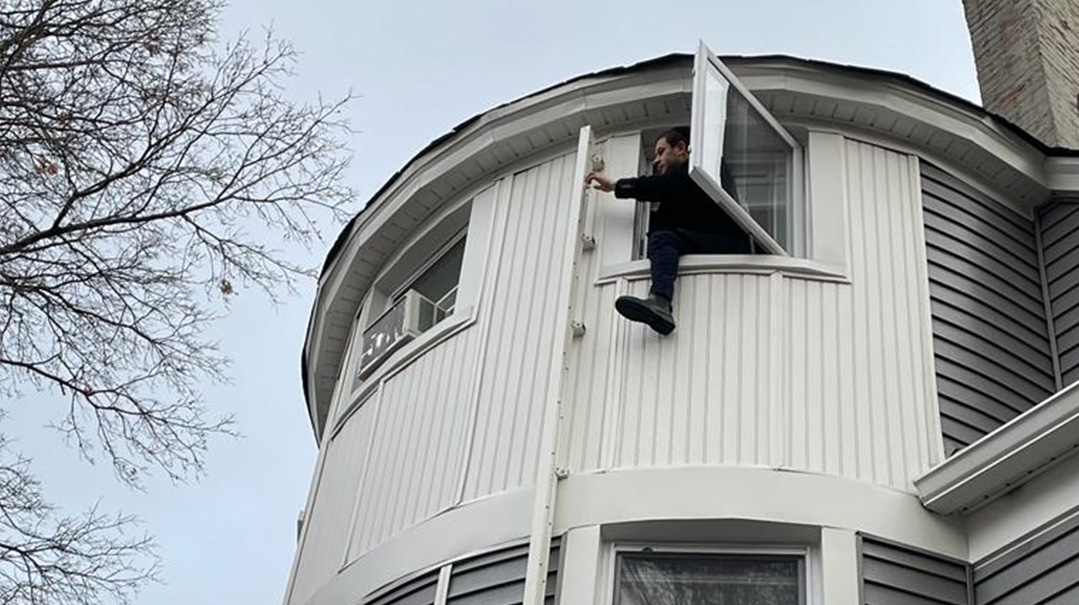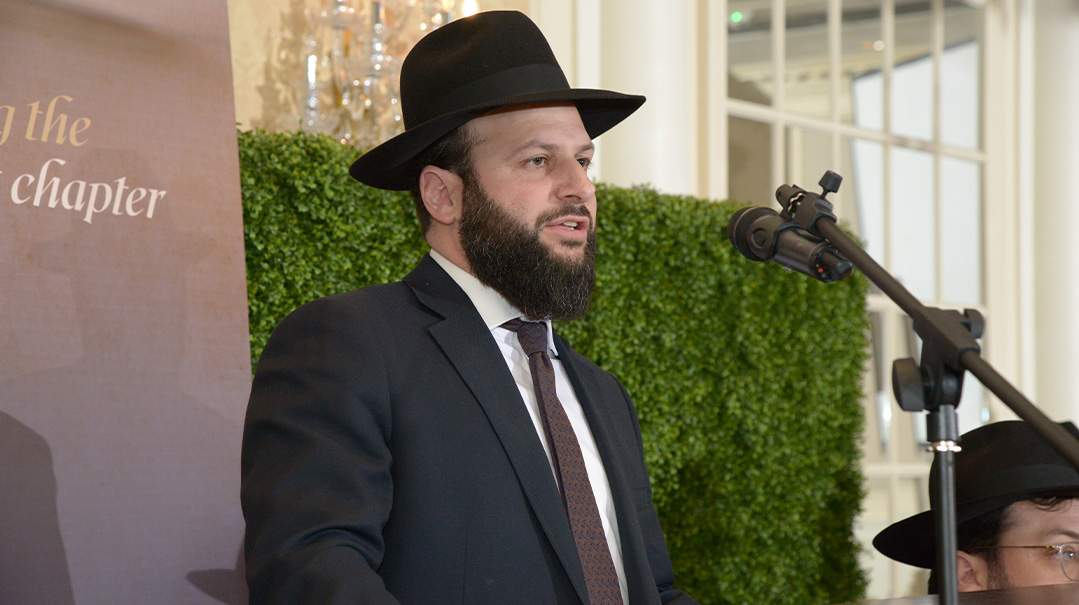10 Questions for… Rabbi Natan Wolf

Rabbi Natan Wolf is the owner and head technician at Wolf Phone Repairs in Hewlett, New York

1 What’s the easiest thing to repair?
Regular iPhone screens, with a small device that transfers screen data from the original to the replacement — it retains True Tone functionality. The toughest is a liquid-damaged device — it’s usually not worth repairing for the device itself, only for data recovery. Repairing the motherboard of a water-damaged device just for data recovery is still a hard fix, because you have to figure out what needs replacing. The actual work is skilled and difficult, but to be honest, it’s also the most fun. Also, a device with a cracked housing or motherboard is often not worth repairing — those should go in the spare parts or recycling pile.
2 Who’s your clientele?
Anyone who needs devices fixed. For schools, it’s usually repairing the laptops and tablets students use. For businesses, it’s devices employees use for work — a lot of these need to have dying batteries replaced, cracked screens fixed, or just some TLC. For my commercial clients, I’m busy with devices for resale, from computers that aren’t producing image or sound, to trackpads that don’t work, to phones that are locked from buyers who returned them without removing their accounts — the list is endless.
3 What’s the most common reason someone’s device breaks?
Usually from dropping it or dropping something onto it. So many people forget their phones on their laps as they get out of the car — that’s a common one. But some are really out there. Someone once brought a seriously destroyed iPhone. It was basically bent in half — he dropped it as he was closing his car door, and it got slammed in the door. Or the time I got a 27-inch iMac that had been impaled and crushed by heavy machinery — I’d never seen anything like that! The logic board was intact and functioning, though it needed a whole new housing, stand, and screen. Sometimes I’ll get devices from commercial clients where I don’t hear a backstory, but they look bizarre, like iPads bent in half or huge dents in strong aluminum casings. I have no idea how these happen, the sheer amount of force it would take to cause such damage, but I don’t ask questions.
4 What training did your job entail?
Nothing formal on my part. I’m fully self-taught in repairing electronics, as well as in soldering and board level repair. I’ve been taking apart computers and electronics since I was about seven years old. Over 11 years ago, a friend in yeshivah asked me to fix his iPhone 4 screen. I figured, Why not? although I’d never done anything like it. I didn’t have the proper tools or setup, so it took me about four hours — most of which was spent searching for the incredibly tiny screws I kept dropping. Word got out that I could fix phones, and it took off from there. Now there are online resources for electronics repair, but back then there wasn’t much information available, or schematics, so it was a good deal of trial and error.
5 Is this a full-time job?
No, I spend my mornings as the student coordinator at Yeshiva of South Shore in Hewlett, and this is what I do after 1 p.m. I like to start with personal devices so people can get them back, then I’ll work on commercial client devices. I work from home — I don’t travel, maybe two or three times that I can remember, and it’s a lot of equipment I keep here in the office: mini screwdrivers, pry tools, adhesives, BGA hot air and soldering station, trinocular stereo microscope, sweep frequency ultrasonic cleaner, a DCPS (direct current power supply), and more.
6 What helps you focus when you work?
For basic repairs, I enjoy music so it’s not too quiet, but when I microsolder, I need it very quiet — one nearly imperceptible twitch from my hand can destroy a logic board while it’s heated and components are loose. Most microsoldering jobs are complex, but I won’t bore you with the details. I always learn something when I do these types of repairs, like figuring out where and how to re-solder microfiber optic wires on a pair of expensive Bose noise-canceling headphones without any schematics. That was a doozy!
7 Is there something you wish everyone knew?
Rice is not a solution to water damage! All it does is help water evaporate faster and it may remove shorts, which can make it look like it fixed the phone — but the minerals left after the water evaporates are conductive and can still cause short circuits. They’re also corrosive, and over a relatively short time, the minerals will corrode internal components to the point that your device won’t function correctly, if at all. I’ll get technical: When it comes to water damage, the logic board needs to be cleaned in a sweep frequency ultrasonic cleaner in a process called cavitation, using a proper Branson EC with distilled water solution. You may need to replace damaged components on the board, and then give a 99 percent isopropyl alcohol bath to displace any leftover solution, after which it needs to be dried properly. Short story? If your phone is exposed to water, turn it off immediately to minimize electrical damage and bring it to a professional.
8 Do you recommend any particular devices or brands based on what you see?
Anything and everything can break, so get what fits your needs and budget. I recommend certain features, though. Get a laptop with cast aluminum or metal housing, which is much sturdier — the internal parts won’t crack the way they do with plastic housings. Also, get phone cases with a good raised lip around the border, so when the phone gets dropped, the first point of impact is hopefully the lip, which absorbs the shock into the case and protects the screen. I also recommend screen protectors — I use ProtectionPro, a custom-cut, flexible, self-healing film that NASA uses for their devices.
9 Who was your most memorable customer?
My friend’s little daughter — I had to re-solder the battery leads to the motherboard of her pink toy camera. I love hearing the excitement in any customer’s voice, no matter the age, and I get it. It’s somewhat miraculous — you bring in a destroyed device, and it comes back good as new. I also enjoy reconnecting people to the memories stored on their devices. Someone recently brought an iPhone 5s that was boot-looping, meaning it would boot to the Apple logo, shut down, and boot back to the logo continuously. He had all his pictures and videos from the past five years on the phone, not backed up to any device or cloud. I had to find the component that was shorted — it was a chip called the PMIC — and replace it. Once we got the phone booting again, he could recover his data. He was ecstatic.
10 What’s the most common question you get?
“How much do you charge for a screen repair?” That’s like going to the mechanic and asking, “How much is it to fix my car?”
(Originally featured in Mishpacha, Issue 895)
Oops! We could not locate your form.







